
Schwabing: Munich's Bohemian Heartbeat
Experience the bohemian charm of Schwabing in Munich, where art, culture, and history meet in a vibrant and dynamic setting.
Schwabing is a vibrant neighbourhood in Munich that exudes a youthful and artistic spirit. Known for its bohemian flair, Schwabing has been a cultural hub since the early 20th century. Today, it continues to be a magnet for artists, intellectuals, and students, making it a lively and dynamic area to explore. Strolling through Schwabing, you'll find tree-lined streets dotted with charming cafes, eclectic boutiques, and an array of restaurants offering diverse culinary delights. Leopoldstraße, one of the main thoroughfares, is a bustling avenue where you can sip coffee at a sidewalk cafe or indulge in some retail therapy at the many unique shops. Schwabing is also home to the Englischer Garten, one of the largest urban parks in the world. Here, you can experience a slice of nature in the heart of the city, complete with picturesque lakes, open meadows, and even a beer garden. The park is a perfect spot for a leisurely walk or a relaxing afternoon picnic. The neighbourhood's rich history is evident in its architecture, with buildings that range from elegant art nouveau structures to modernist designs. Cultural landmarks like the Münchner Freiheit and the Siegestor add to the area's historical charm, making Schwabing a must-visit for those looking to immerse themselves in Munich's artistic and cultural scene.
Local tips in Schwabing
- Visit the Englischer Garten for a serene escape and don't miss the iconic beer garden at the Chinese Tower.
- Explore the side streets off Leopoldstraße to discover hidden boutiques and cozy cafes.
- For an authentic local experience, visit the weekly farmers' market at Elisabethplatz.
- Take a walk along Hohenzollernstraße to admire the beautiful art nouveau architecture.
- Spend an evening at the Münchner Freiheit, a cultural hotspot with live music and theatre performances.
Schwabing: Munich's Bohemian Heartbeat
Schwabing is a vibrant neighbourhood in Munich that exudes a youthful and artistic spirit. Known for its bohemian flair, Schwabing has been a cultural hub since the early 20th century. Today, it continues to be a magnet for artists, intellectuals, and students, making it a lively and dynamic area to explore. Strolling through Schwabing, you'll find tree-lined streets dotted with charming cafes, eclectic boutiques, and an array of restaurants offering diverse culinary delights. Leopoldstraße, one of the main thoroughfares, is a bustling avenue where you can sip coffee at a sidewalk cafe or indulge in some retail therapy at the many unique shops. Schwabing is also home to the Englischer Garten, one of the largest urban parks in the world. Here, you can experience a slice of nature in the heart of the city, complete with picturesque lakes, open meadows, and even a beer garden. The park is a perfect spot for a leisurely walk or a relaxing afternoon picnic. The neighbourhood's rich history is evident in its architecture, with buildings that range from elegant art nouveau structures to modernist designs. Cultural landmarks like the Münchner Freiheit and the Siegestor add to the area's historical charm, making Schwabing a must-visit for those looking to immerse themselves in Munich's artistic and cultural scene.
Iconic landmarks you can’t miss
Hofgarten
Discover the serene beauty of Hofgarten, a historic park in Munich that blends nature, architecture, and tranquility in the heart of the city.

Königsplatz
Explore the stunning Königsplatz in Munich, a historical landmark showcasing classical architecture and vibrant cultural events.
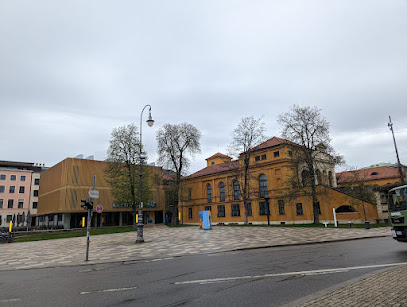
Münchner Freiheit
Discover the lively atmosphere of Münchner Freiheit, a cultural hotspot in Munich filled with dining, shopping, and vibrant street life.

Siegestor
Explore the Siegestor in Munich, a stunning triumphal arch symbolizing victory and peace, surrounded by vibrant city life and rich history.

Walking Man
Experience Munich's artistic spirit at the iconic Walking Man sculpture, a captivating landmark that invites reflection and exploration in the heart of the city.

Pumucklbrunnen
Discover the enchanting Pumucklbrunnen in Munich, a whimsical fountain that embodies the spirit of German folklore and charm.

Carl-Orff-Bogen-Park
Explore the serene charm of Carl-Orff-Bogen Park in Munich, a perfect retreat for nature lovers and families alike, offering tranquility and beauty.
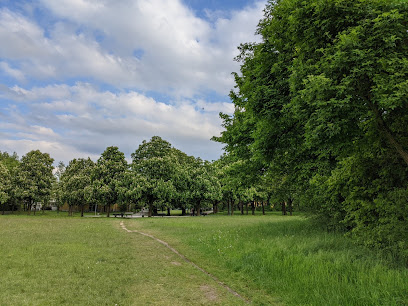
Burgfriedensäule
Explore the historical Burgfriedensäule in Munich, a stunning landmark embodying the city's rich heritage and vibrant culture amidst picturesque gardens.
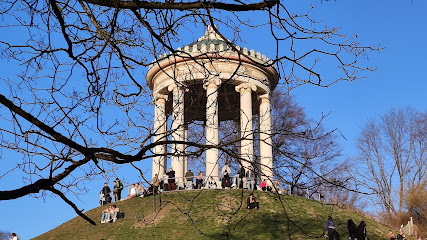
Obelisk im Luitpoldpark
Experience the grandeur of the Obelisk in Luitpoldpark, a historical monument set amidst stunning gardens in the heart of Munich.

Sckellmonument
Discover the serene beauty of Sckellmonument in Munich, a tribute to naturalist Joseph von Sckell amidst lush landscapes and rich history.
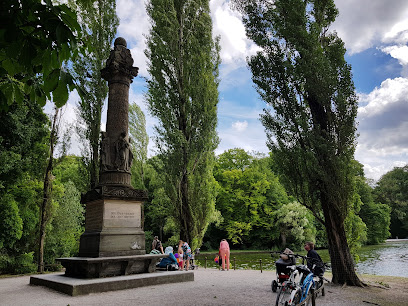
Friedrich Schiller Monument
Explore the Friedrich Schiller Monument in Munich, a stunning tribute to literary excellence set in a picturesque garden, perfect for history enthusiasts and casual visitors alike.

Wedekindbrunnen
Discover the enchanting Wedekindbrunnen in Munich, a serene fountain surrounded by lush greenery and vibrant local culture, perfect for relaxation and photography.

Monument to Reinhard Freiherr von Werneck
Explore the Monument to Reinhard Freiherr von Werneck, a historical landmark in Munich surrounded by nature's beauty and rich history.

Gedenkstein an die erste Gleichstromfernübertragung
Explore Munich's Gedenkstein, a tribute to the first long-distance direct current transmission, and discover the city's rich technological history.

Kunst am Bau: Versunkenes Dorf
Discover the enchanting Kunst am Bau: Versunkenes Dorf in Munich, where art meets history in a serene, picturesque setting.

Unmissable attractions to see
Olympiapark München
Discover the iconic Olympiapark München, a blend of history, culture, and recreation in the heart of Munich's vibrant landscape.

Münchner Freiheit
Discover Münchner Freiheit, a vibrant square in Munich filled with shopping, dining, and cultural experiences in the heart of Schwabing.

Bauhausplatz
Explore Bauhausplatz, a vibrant cultural hub in Munich showcasing modernist architecture, art galleries, and a lively atmosphere brimming with creativity.
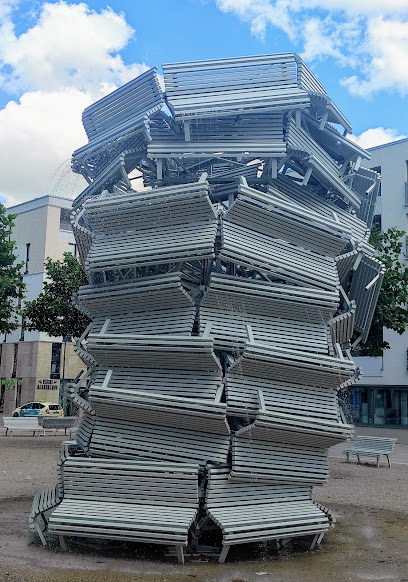
Mädchen mit Seehund Brunnen
Discover the charm of Munich at the Mädchen mit Seehund Brunnen, a picturesque fountain with a whimsical sculpture that captures the city's artistic spirit.

Bärenbrunnen
Discover Bärenbrunnen in Munich's Elisabethmarkt - a charming fountain surrounded by vibrant local culture and market life.

Viergeschossiges Jugendstilhaus
Discover the exquisite Jugendstil architecture of Viergeschossiges Jugendstilhaus in Munich, a cultural gem in the vibrant Schwabing-Freimann district.

Schwabinger Maibaum
Explore Munich's vibrant culture at Schwabinger Maibaum, a captivating maypole symbolizing Bavarian heritage and community celebrations.

MURALARUM
Discover MURALARUM, Munich's vibrant artistic attraction showcasing stunning murals that celebrate creativity and cultural expression.

Essential places to dine
La Bohème Schwabing
Experience exquisite French cuisine at La Bohème Schwabing, where elegant dining meets culinary excellence in Munich's vibrant Schwabing district.

Dhaba Münchner Freiheit
Discover authentic Indian flavors at Dhaba Münchner Freiheit in Munich's Schwabing district - A culinary gem for every food lover.
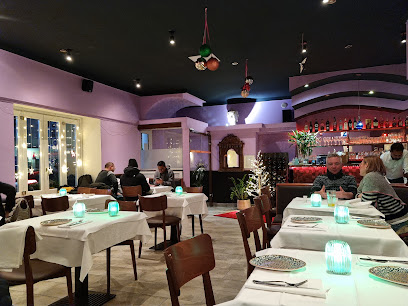
Weinbauer Inn
Discover the heart of Bavaria at Weinbauer Inn – where authentic cuisine meets vibrant beer culture in Munich's charming Schwabing district.

Kaisergarten
Discover traditional Bavarian flavors at Kaisergarten - Munich's charming beer garden and restaurant offering authentic cuisine.

Chopan Schwabing
Experience authentic Afghani cuisine at Chopan Schwabing in Munich – where rich flavors meet warm hospitality.

Waldfee
Experience authentic Austrian cuisine at Waldfee in Munich's charming Schwabing district, where tradition meets culinary excellence.

Restaurant ÖEINS in Schwabing
Experience modern German cuisine at Restaurant ÖEINS in Schwabing—where flavor meets ambiance in Munich's vibrant dining scene.

Restaurant Da Angelo
Discover authentic Italian cuisine in Munich's Schwabing-West at Restaurant Da Angelo – where every dish tells a story.

The Lonely Broccoli & Terrasse
Discover innovative cuisine at The Lonely Broccoli & Terrasse in Munich's vibrant Schwabing district - a must-visit for food lovers.

Brothers Restaurant
Discover Brothers Restaurant in Munich: Where fine dining meets innovative cuisine for an unforgettable culinary journey.

Markets, malls and hidden boutiques
GALERIA München Schwabing
Explore GALERIA München Schwabing: A Shopping Haven in Munich's Trendy Schwabing District with Diverse Brands and Delicious Dining Options.

Flying Tiger Copenhagen
Explore Flying Tiger Copenhagen in Munich for quirky gifts, DIY supplies, and affordable home goods that add a touch of fun to your travels.
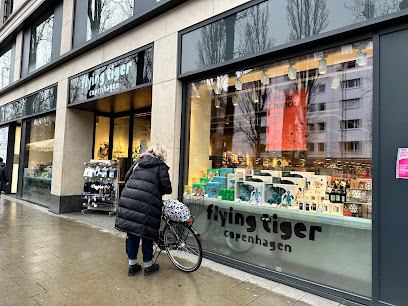
Carhartt WIP Store Munich
Explore the Carhartt WIP Store in Munich, where streetwear meets quality craftsmanship in a vibrant shopping experience.

hessnatur Store Munich
Discover sustainable fashion at Hessnatur Store in Munich, offering eco-friendly clothing for the entire family in a charming shopping atmosphere.

DearGoods München Schwabing
Explore the vibrant fashion scene at DearGoods München Schwabing, where unique clothing and accessories await every discerning shopper.

weißglut concept store
Explore the artistic spirit of Munich at weißglut Concept Store, where unique treasures and contemporary design come together in a vibrant shopping experience.
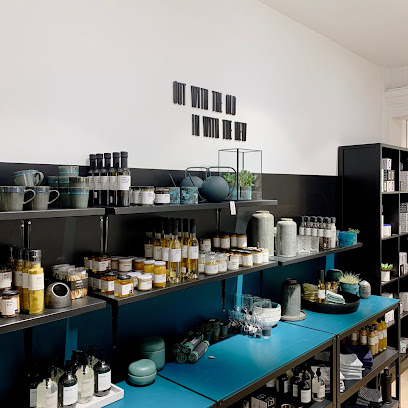
DearGoods
Explore unique fashion at DearGoods, a top clothing store in Munich's lively Schwabing-West district, perfect for trendy and quality apparel.

FRIEDE + STERN gifts, goods and more
Explore the charm of FRIEDE + STERN, Munich's unique gift shop offering a curated selection of local treasures and distinctive souvenirs.

Schwabing Mitte
Discover unique fashion at Schwabing Mitte, a stylish boutique in Munich's trendy Schwabing district, where local designs meet vibrant city life.

Shop
Explore Schwabing-West's vibrant shopping scene, where unique boutiques and local craftsmanship come together in Munich's artistic heart.

Essential bars & hidden hideouts
CALL SOUL - Breaking Bar
Discover the vibrant ambiance and innovative cocktails at CALL SOUL - Breaking Bar in Munich's artistic Schwabing district.

The Keg Bar
Discover The Keg Bar in Munich's Schwabing-Freimann, a lively destination for drinks, snacks, and unforgettable social experiences.

Schwabinger 7
Uncover Munich's nightlife at Schwabinger 7, a bustling bar in Schwabing offering cocktails, local beers, and a lively atmosphere for all.

Cocktailhouse
Discover a vibrant cocktail experience at Cocktailhouse, Munich's go-to destination for innovative drinks and a stylish atmosphere.

The Potting Shed Bar & Kitchen
Discover The Potting Shed Bar & Kitchen in Munich, where unique burgers and crafted cocktails meet a cozy atmosphere for an unforgettable dining experience.

Café BANGKOK
Experience the vibrant fusion of Thai cuisine and lively dance at Café BANGKOK, Munich's premier dance restaurant and cocktail bar.

Wallace Bar
Experience the best of Munich's nightlife at Wallace Bar, where expertly crafted cocktails meet a lively atmosphere.

Pomp Cocktail Bar
Discover the vibrant nightlife of Munich at Pomp Cocktail Bar, where expertly crafted cocktails and a lively atmosphere await.
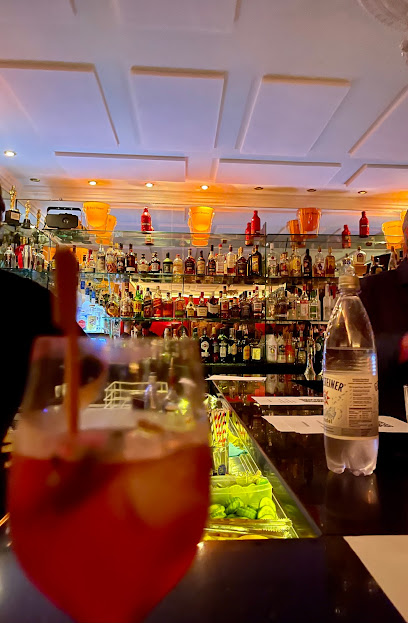
Vega Bar
Experience the vibrant nightlife of Munich at Vega Bar, where expertly crafted cocktails and a lively atmosphere await you.

EsteBar
Experience the vibrant energy of EsteBar in Munich's Schwabing-Freimann, where cocktails and camaraderie come together in a lively atmosphere.

Local Phrases
-
- HelloServus
[Zer-voos] - GoodbyeAuf Wiedersehen
[Owf Vee-der-zay-en] - YesJa
[Ya] - NoNein
[Nine] - Please/You're welcomeBitte
[Bit-te] - Thank youDanke
[Dahn-ke] - Excuse me/SorryEntschuldigung
[Ent-shool-dee-gung] - How are you?Wie geht es Ihnen?
[Vee gayt es Een-en?] - Fine. And you?Gut. Und Ihnen?
[Goot. Oont Een-en?] - Do you speak English?Sprechen Sie Englisch?
[Shpre-khen Zee Eng-lish?] - I don't understandIch verstehe nicht
[Ikh fer-shtay-eh nikht]
- HelloServus
-
- I'd like to see the menu, pleaseIch würde gerne die Speisekarte sehen, bitte
[Ikh vur-de gern-e dee Shay-ze-kart-eh zay-en, bit-te] - I don't eat meatIch esse kein Fleisch
[Ikh es-suh kine Fly-sh] - Cheers!Prost!
[Prohst!] - I would like to pay, pleaseIch möchte bitte bezahlen
[Ikh mursh-te bit-te bey-zal-en]
- I'd like to see the menu, pleaseIch würde gerne die Speisekarte sehen, bitte
-
- Help!Hilfe!
[Hil-feh!] - Go away!Geh weg!
[Gay vekh!] - Call the Police!Rufen Sie die Polizei!
[Roo-fen Zee dee Po-lee-tsay!] - Call a doctor!Rufen Sie einen Arzt!
[Roo-fen Zee I-nen Arts-t!] - I'm lostIch habe mich verlaufen
[Ikh hah-buh meekh fer-lou-fen] - I'm illIch bin krank
[Ikh been krunk]
- Help!Hilfe!
-
- I'd like to buy...Ich möchte kaufen...
[Ikh mursh-te kow-fen...] - I'm just lookingIch schaue nur
[Ikh shau-eh noor] - How much is it?Wie viel kostet es?
[Vee feel kohs-tet es?] - That's too expensiveDas ist zu teuer
[Dahs ist tso toy-er] - Can you lower the price?Können Sie den Preis senken?
[Kern-en Zee den Price zen-ken?]
- I'd like to buy...Ich möchte kaufen...
-
- What time is it?Wie spät ist es?
[Vee shpayt ist es?] - It's one o'clockEs ist ein Uhr
[Es ist iyn oor] - Half past (10)Halb elf
[Halb elf] - MorningMorgen
[Mor-gen] - AfternoonNachmittag
[Nahk-mit-tahk] - EveningAbend
[Ah-bent] - YesterdayGestern
[Ges-tern] - TodayHeute
[Hoy-teh] - TomorrowMorgen
[Mor-gen] - 1Eins
[Iyns] - 2Zwei
[Tsvey] - 3Drei
[Dray] - 4Vier
[Feer] - 5Fünf
[Fuhnf] - 6Sechs
[Zex] - 7Sieben
[Zee-ben] - 8Acht
[Akht] - 9Neun
[Noy-n] - 10Zehn
[Tsen]
- What time is it?Wie spät ist es?
-
- Where's a/the...?Wo ist ein/der...?
[Vo ist iyn/der...?] - What's the address?Was ist die Adresse?
[Vas ist dee Ah-dres-se?] - Can you show me (on the map)?Können Sie es mir zeigen (auf der Karte)?
[Kern-en Zee es meer tsay-gen (ouf der Kar-te)?] - When's the next (bus)?Wann kommt der nächste (Bus)?
[Vann kohmt der nekhs-te (Boos)?] - A ticket (to ....)Eine Fahrkarte (nach ....)
[I-nuh Fahr-kar-te (nakh ....)]
- Where's a/the...?Wo ist ein/der...?
History of Schwabing
-
Schwabing's history dates back to the 11th century when it was a small village outside of Munich. Its proximity to the city allowed it to grow over the centuries, becoming a hub for artists and intellectuals in the late 19th and early 20th centuries. The area became synonymous with the bohemian lifestyle, attracting figures like Franz Marc and Wassily Kandinsky, who were pivotal in the development of modern art.
-
In the aftermath of World War I, Schwabing became a focal point for political activism. The Schwabing Revolution, which took place in 1918, was marked by protests against the war and the monarchy. This period saw the rise of socialist movements and laid the groundwork for the establishment of the Weimar Republic. Schwabing's cafes and bars served as meeting points for revolutionaries and thinkers.
-
Schwabing solidified its status as a cultural epicenter in the early 20th century, hosting various artistic movements, including Expressionism. The area was home to numerous galleries, theaters, and the famous Munich Art Academy. The intellectual climate was enriched by the presence of influential writers and philosophers, such as Thomas Mann, who frequented the local cafes, contributing to the vibrant cultural tapestry.
-
During the Nazi regime, Schwabing's artistic community faced repression, as many artists and intellectuals were persecuted or forced into exile. Post-World War II, Schwabing underwent a transformation, with efforts to revive its cultural identity. The rebuilding of the area led to a renaissance in the arts, with new galleries and cultural institutions emerging, reflecting Munich's commitment to preserving its artistic heritage.
-
Today, Schwabing is a lively neighborhood known for its vibrant streets, eclectic shops, and bustling markets. The area continues to celebrate its artistic legacy through events such as the Schwabing Art Fair and various cultural festivals. It remains a popular district for both locals and tourists, embodying the spirit of innovation and creativity that has defined it for centuries.
Schwabing Essentials
-
Schwabing is easily accessible from various neighborhoods in Munich. The U-Bahn (subway) lines U2 and U6 connect Schwabing to the city center, with stops at Sendlinger Tor and Marienplatz. Trams 12 and 27 also serve the area. For those coming from Munich Airport, take the S8 or S1 to Leuchtenbergring, then transfer to the U2 line towards Messestadt. The total journey takes approximately 45 minutes.
-
Schwabing is well-connected by public transport, including U-Bahn and tram services. The U6 and U2 lines run through the neighborhood, making it easy to reach other parts of Munich. Bicycles are also a popular option, with numerous bike rental stations available. Schwabing is pedestrian-friendly, with many cafes, shops, and parks within walking distance.
-
Schwabing is generally a safe neighborhood for tourists. However, it is advisable to exercise caution, particularly in the areas near the English Garden during late hours. Always keep an eye on your belongings in crowded places and avoid displaying valuable items. While violent crime is rare, petty theft can occur, so vigilance is key.
-
In case of an emergency, dial 112 for medical assistance or 110 for police assistance. There are several hospitals and pharmacies in Schwabing, including the Klinikum Schwabing, which is equipped to handle emergencies. It is advisable to have travel insurance that covers medical emergencies.
-
Fashion: Do dress appropriately for the occasion, especially when visiting religious sites. Casual yet stylish attire is common in Schwabing. Religion: Do respect local customs and traditions. When visiting places of worship, dress modestly. Public Transport: Do be courteous to fellow passengers, offering your seat to the elderly or disabled. Don’t eat or drink on public transport. Greetings: Do greet locals with a friendly 'Hallo' or 'Guten Tag.' Handshakes are customary. Eating & Drinking: Do try local eateries and sample Bavarian beer and pretzels. Don’t engage in loud behavior in restaurants or cafes, as it is considered impolite.
-
To experience Schwabing like a local, visit the bustling Elisabethmarkt for fresh produce and local delicacies. Explore the neighborhood's vibrant art scene, including galleries and street art. Enjoy a leisurely stroll through the English Garden, particularly in spring and summer. Join locals at beer gardens for an authentic Bavarian experience, and don’t hesitate to strike up a conversation; residents are often friendly and willing to share tips about the area.
Trending Landmarks in Schwabing
-
Hofgarten
-
Königsplatz
-
Münchner Freiheit
-
Siegestor
-
Walking Man
-
Pumucklbrunnen
-
Carl-Orff-Bogen-Park
-
Burgfriedensäule
-
Obelisk im Luitpoldpark
-
Sckellmonument
-
Friedrich Schiller Monument
-
Wedekindbrunnen
-
Monument to Reinhard Freiherr von Werneck
-
Gedenkstein an die erste Gleichstromfernübertragung
-
Kunst am Bau: Versunkenes Dorf
Nearby Cities to Schwabing
-
Things To Do in Kitzbühel
-
Things To Do in Innsbruck
-
Things To Do in Salzburg
-
Things To Do in Zell am See
-
Things To Do in Nuremberg
-
Things To Do in St. Anton am Arlberg
-
Things To Do in Bregenz
-
Things To Do in Dornbirn
-
Things To Do in Bad Gastein
-
Things To Do in Hallstatt
-
Things To Do in Rothenburg ob der Tauber
-
Things To Do in Schellenberg
-
Things To Do in Ruggell
-
Things To Do in Mauren
-
Things To Do in Stuttgart













